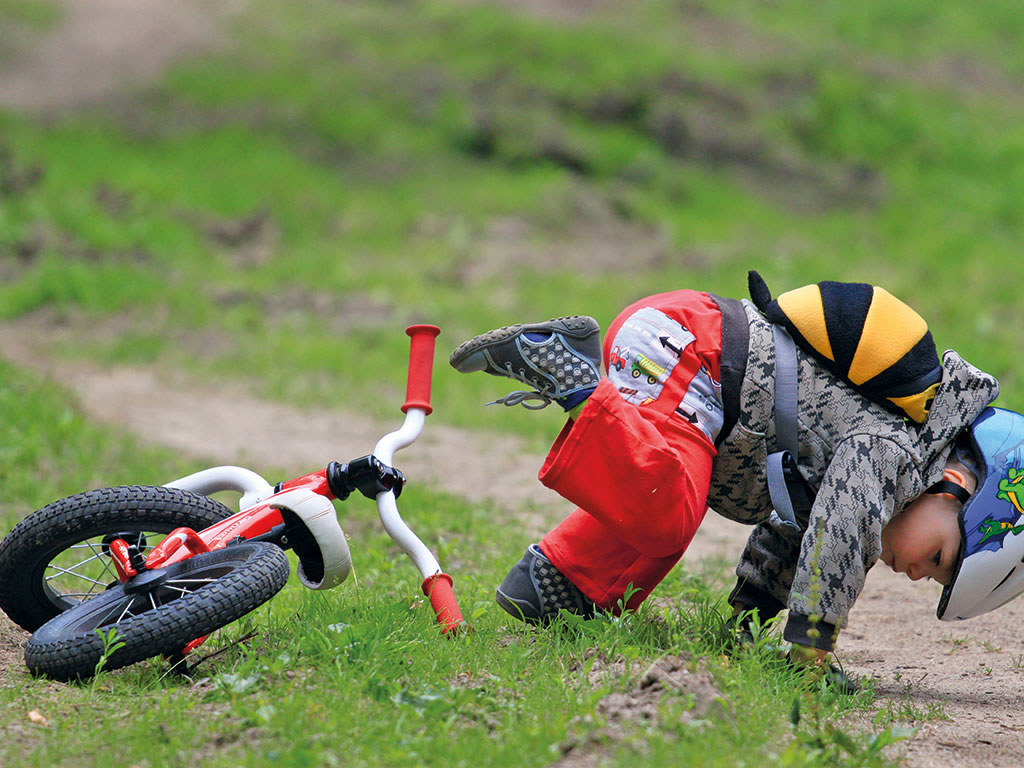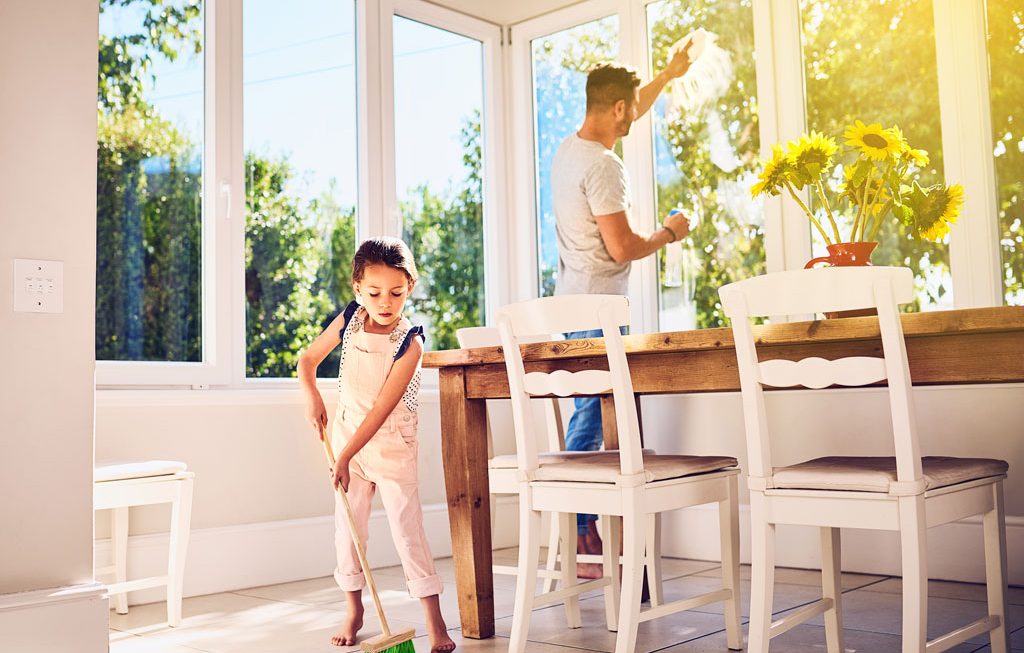by Stephanie Lopes
Oh no! My child was sitting a little too close to the edge of the couch and then – bam! Whether a baby, a school-aged child or an older relative, a fall can make a caregiver’s heart drop with worry.
“Falls are inevitable, but injuries are preventable!” says Dr. Max Vercruyssen, president of Hawaii Academy and self-described fall advocate.
“Keeping children from becoming injured should emphasize engineering/selecting safe environments for play that decrease the probability of unintentional falls and encourage the practice of safe falling (ground contact) maneuvers,” he continues.
In addition to offering trampoline, tumbling, gymnastics and fitness/ninja training for all ages and abilities at its Honolulu, Pearl Harbor and Waipahu locations, Hawaii Academy also offers safe falling workshops – for all ages and activities.
And, safe falling is important, as falls are the most common cause of injury visits to the emergency room for young children in the U.S., according to Stanford Medicine. Falls can cause open wounds, fractures, brain injuries and other severe injuries.
Taking steps to ensure children are playing in a safe space and knowing age-appropriate safe falling techniques can help mitigate injuries from falls.
Select a safe space to play.
“Please learn immediately that ‘fall prevention’ is a misnomer!” explains Vercruyssen. “To me that’s like reducing the number of drowning injuries by implementing a campaign to stay out of the water (thus ‘swimming prevention’).”
Instead of trying to completely prevent falls, which is nearly impossible, caregivers can create safe spaces for children to play.
Think soft surfaces.
Like the tumbling mats at Hawaii Academy, floor surfaces should be soft and secure to soften impacts. Slip-resistant padded mats or area rugs secured with double-sided tape on top of foam padding are good options for young children’s play spaces. Also, remember to remove clutter and other reachable toddler hazards (including electrical outlets and cords) in play areas.
Secure furniture.
Use wall mounts, brackets, braces and anchors to prevent furniture and TVs from tipping over. Add padding to sharp table corners. And, for keiki furniture, ensure it meets safety standards and is used properly (with safety straps and buckles for highchairs and changing tables, for example).
Always supervise on high places.
Closely supervise young children on top of beds, changing tables and couches to make sure they don’t accidentally roll off. Additionally, save the excitement of bunkbeds for elementary-aged children, not toddlers.
Watch windows.
What’s outside can spark a child’s interest – and also lead to fatal falls. Install window guards; only open out-of-reach windows; remove furniture near windows; don’t rely on screens for security; and, set window rules for older children: These are a few recommendations to mitigate the risks of fatal falls through glass or screens.
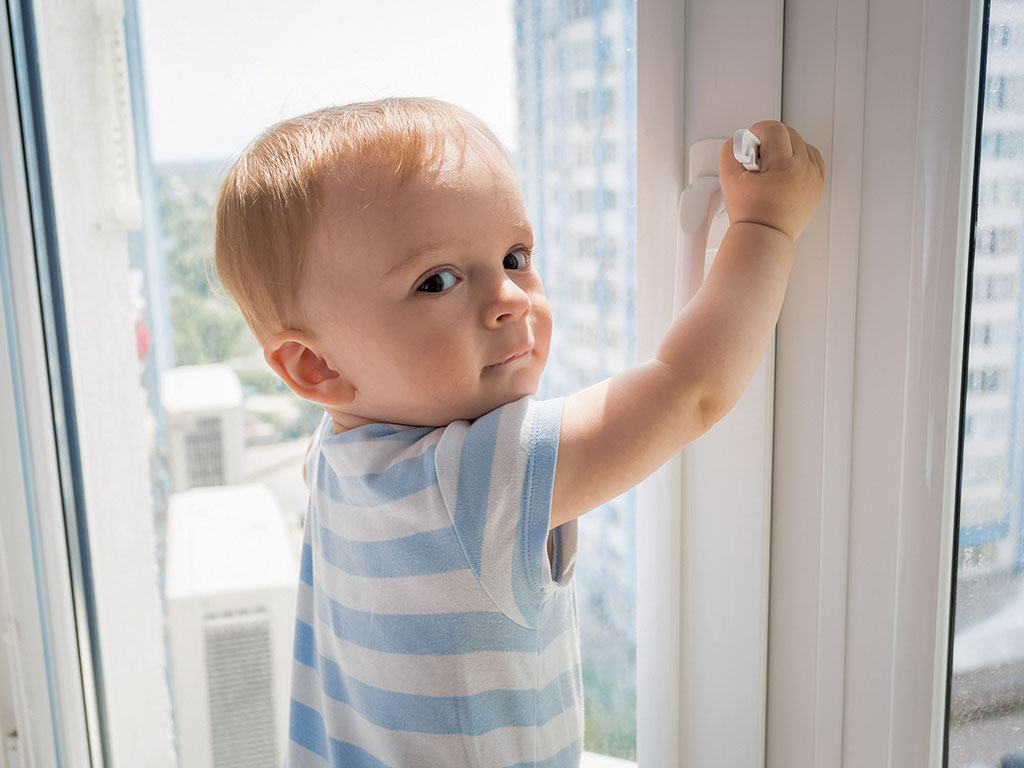
Safely step up and down stairs.
Set up those safety gates at the top and bottom of stairs to stop curious babies and toddlers from trampling down. Instruct a child to safely go down stairs – often backwards when they are younger – and remove any clutter on stairs to limit accidental falls by all ages.
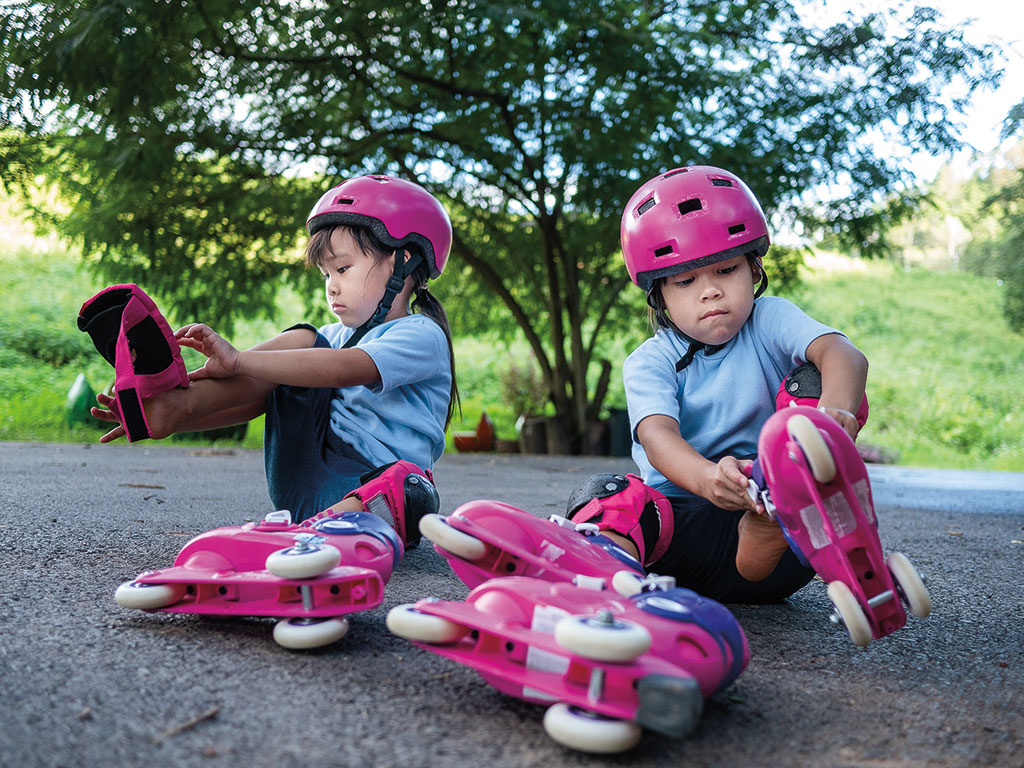
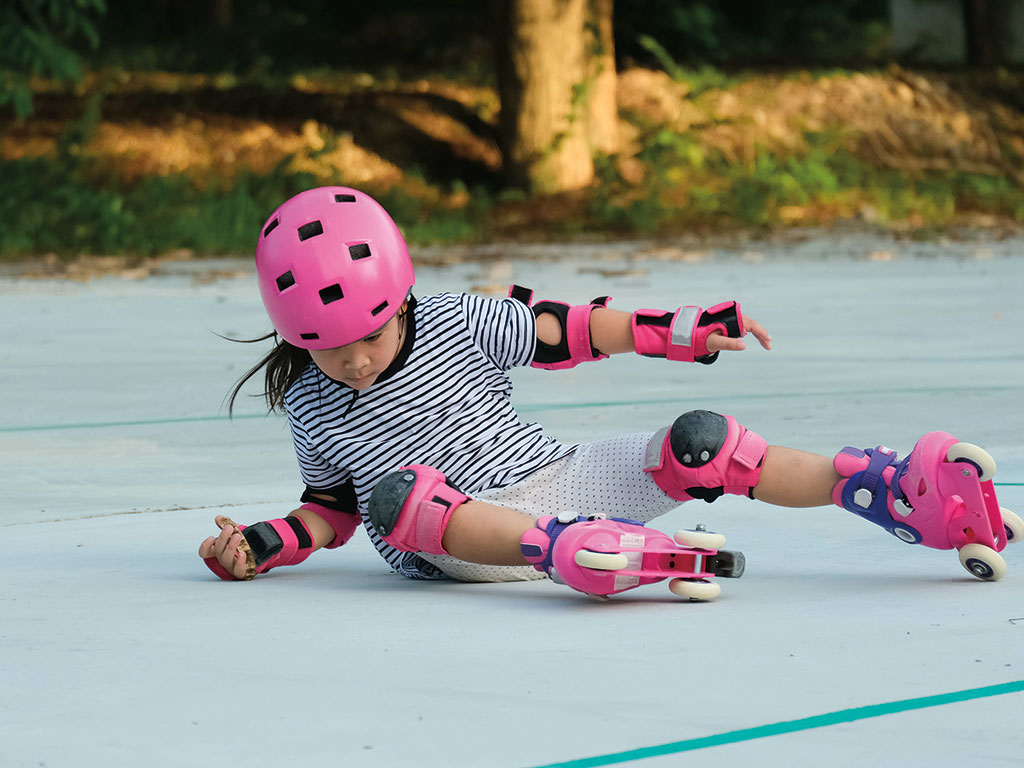
Explore the outdoors safely.
Helmets should always be worn to prevent biking, skateboard or other wheeled-activity falls. Playgrounds are a great place to explore and practice new skills, but are they a safe space to fall? Shock-absorbing surfaces such as rubber, synthetic turf, sand, pea gravel, wood chips or mulch make falling safer. Also, note that different playground equipment is typically designed for different age ranges.
Offer extra precautions and supervision for infants and toddlers.
Infants are more likely to fall from baby walkers, furniture and stairs, according to Stanford Medicine, so baby walkers are not recommended for teaching infants to walk. Toddlers tend to fall from windows and playground equipment, says Stanford.
“Infants are usually inexperienced, untrained, unprotected and truly victims of the environments created by adults. Infant losses are tragic, and such losses could be dramatically reduced by safe fall education of adults,” adds Vercruyssen.
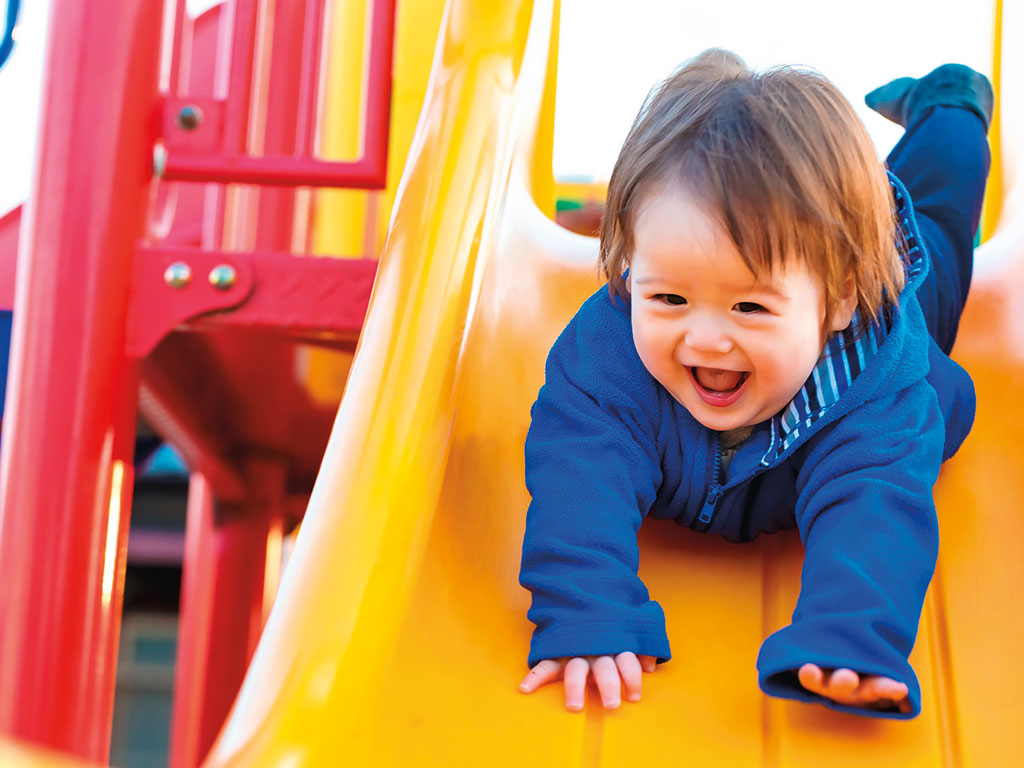
Practice safe falling maneuvers to reduce injuries.
“Falls are not always bad. In fact, locomotion requires one to first ‘fall’ off balance,” explains Vercruyssen. “We must teach safe falling (without injuries) like, especially here in Hawaii, we must teach safe swimming (without drownings).”
Dr. Vercruyssen explains there are two basic concepts for reducing injury while falling.
First, “when landing on the ground, try to land with as much body-surface-area as possible, thereby reducing pressure to any one individual body part,” he says.
Second, “do not allow any particularly vulnerable part of your body to land with full force. Instead, spread the fall over a large area of the body,” he continues.
“With no horizontal momentum during the fall (such as slipping on ice and falling straight downward), contact the ground as flat as possible while performing a simultaneous slap of the arms and legs on impact (called a breakfall in martial arts). With slight horizontal momentum, perform a rocking motion to distribute/disperse the falling force. With walking speed horizontal momentum, rolling motions are often effective. But, at horizontal speed faster than a run, a strategic slide is necessary; (thus, the reason motorcyclists wear a helmet and leathers.),” Vercruyssen describes.
Specifically, “There are about two seconds before ground impact – usually enough time to prepare an appropriate ground contact maneuver to prevent injuries,” says Vercruyssen.
“Each scenario requires a slightly different course of action, but nearly all can be learned with practice. Regardless of age or ability, there are safe falling skills that can be learned that greatly reduce the risk of injury… Everyone can benefit from learning some basics,” he adds.
Contact Hawaii Academy at info@hawaiiacademy.com or (808) 842-5642 for more information on their falling workshops and specialized training clinics.
Realize when to see a doctor after a fall.
A fall can be scary and may cause a caregiver to immediately call the pediatrician or bring the child to the emergency room. While it’s always better to be safe than sorry, “the majority of the time, these children do just fine without any significant injuries or complications,” says Dr. Vinson Diep, trusted pediatrician with an office at Kapiolani Medical Center for Women & Children. “We often think about the height of the fall, which if it is less than three feet, it shouldn’t cause significant damage.”
Two falling injuries are common in young children: Toddler’s Fracture and FOOSH (“falling on outstretched hand”). Diep explains, “Toddler’s Fracture is usually due to a twisting or falling injury, or sliding down a slide and getting their leg caught under them. School-aged children are susceptible to FOSH, which happens if a child is running and falls but puts their arm out to break their fall; this causes the impact to be on the wrist which can then be distributed up into the forearm and cause something known as a buckle fracture, common around the wrist.”
When should a caregiver bring a loved one to see a doctor after a fall?
“If there is any suspected loss of consciousness, bring the child to the ER. Persistent vomiting, lethargy, or any alteration in mental status should also prompt an ER visit,” Diep continues, mentioning these may be signs of a head injury.
“Warning signs of extremity injuries (arms and legs especially) include the inability to bear weight or persistent limping, redness or swelling, pain out of proportion to injury, persistent numbness or tingling, and reduced perfusion (blood flow) to an extremity,” says Diep.
“Sometimes it is difficult after an injury to know whether it is a minor sprain or whether it is a broken bone. If there is an obvious deformity to the bone, immediately go to the ER,” adds Diep. “If there isn’t an obvious deformity, it may be helpful to apply an ice pack or wrap to the area to help decrease the swelling, and immediately stop all activity to allow healing.”
In any situation, if pain or concerns persist, consult your pediatrician for further advice. If you would like to speak more with Dr. Diep, call (808) 945-9955 or email pediatrics@doctordiep.com.


